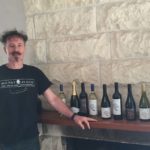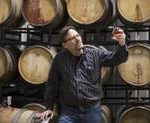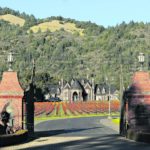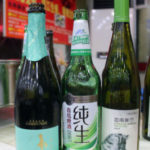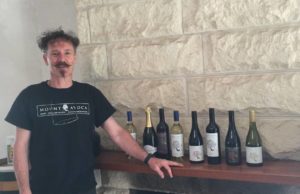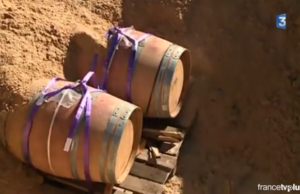Beyond beer: Wollersheim Winery does Wisconsin proud
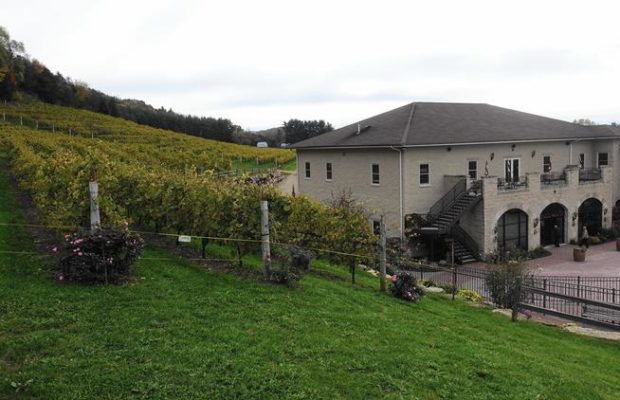
The winding blacktop leading to Wollersheim Winery in Wisconsin is a scene straight out of central casting: red-barn dairy farms, sky-blue waters of a rolling river, craggy bluffs topped by oaks and maples.
Approaching the winery’s entrance, a roadside bar and grill called Steve’s Arboretum comes into view, its red, white and blue PBR sign standing like a sentinel over an acre of grapevines.
Somehow the grapevines seem out of place. This is a long way from Napa. And Wisconsin is known for its cheese and beer, not Burgundy.
But grapevines are becoming more commonplace in America’s Dairyland. The state now has 80 wineries, according to the Wisconsin Winery Association, a boom compared with the half dozen that existed when the Wollersheim family began crushing grapes in 1972. The gain extends throughout the Upper Midwest, thanks to advancements in breeding cold-climate grapes.
Located 25 miles northwest of Madison near the town of Prairie du Sac, Wollersheim Winery is the largest in the state, turning out a quarter-million gallons of wine — enough to fill about 1.1 million bottles — each year. The winery produces whites, reds, ports and ice wine, a dessert wine made with estate-grown grapes handpicked in December. It also has a sister winery, Cedar Creek, near Milwaukee in Cedarburg.
Grapes of four hybrid varieties are grown on Wollersheim’s 30 acres of hillside vineyards. But about 85 percent of the fruit is trucked to Wisconsin after being custom-grown in upstate New York, Washington and California.
With a portfolio of 20 varieties, Wollersheim keeps racking up the awards. This year, it won gold for its rieslings and its blockbuster semi-dry white, Prairie Fume, in Sonoma County, Los Angeles, San Francisco and New York competitions, to name a few.
The winery’s history dates to 1847, when Agoston Haraszthy, a Hungarian nobleman and American explorer, planted grapevines along the Wisconsin River. The winters proved to be too much for Haraszthy’s European vines. He fled to California in 1849 and eventually planted vineyards in San Diego and Sonoma, winning renown as a viniculture pioneer.
Located 25 miles northwest of Madison near the town of Prairie du Sac, Wollersheim Winery is the largest winery in Wisconsin, turning out a quarter-million gallons of wine — enough to fill about 1.1 million bottles — each year. (Kurt Chandler / Chicago Tribune)
Immigrant Peter Kehl, whose forbearers made wine along Germany’s Rhine River, took over the property. The Kehls raised winter-hardy grapes for four generations. But in 1898, an especially bitter winter decimated the vineyards. The Kehls stopped making wine and turned the land into a conventional farm.
Some 70 years later, in a Madison suburb, an electrical engineer who made wine in his garage heard about a farm for sale that had once grown grapes. Bob Wollersheim had worked for years at the University of Wisconsin, designing satellites for NASA. Casting fate to the wind, Bob and his wife, JoAnn, decided to buy the erstwhile winery.
The Wollersheims’ oldest daughter, Julie, was going into second grade when her parents plucked her and her brother and sister from their suburban existence and dropped them in a limestone farmhouse.
“It was kind of exciting because we were moving to the country,” recalls Julie, now the winery’s director of marketing and advertising. “We had a big garden, and there were wood stoves in the house that had been there for 100 years. That’s how we heated the house.”
To help with day-to-day operations, Bob Wollersheim hired an intern in 1984. Just 19 at the time, Philippe Coquard was a 13th-generation winemaker whose family lived in the Beaujolais region of France.
“I didn’t speak English,” Philippe says. “I wasn’t planning on staying too long, maybe two months, then go to California and try something else. Then I fell in love.”
Philippe married Julie — now Julie Coquard — in 1986. He went on to earn degrees in winemaking and viticulture. Bob Wollersheim soon asked his son-in-law to take over the winemaking operation. And nine years later, Philippe was named winemaker of the year at the Wineries Unlimited conference in Pennsylvania.
“Business just grew and grew,” Philippe says. “We went from 8,000 gallons in 1984 to 250,000 last year.”
Bob Wollersheim died of brain cancer in 2005 at age 66. Since then, Julie and Philippe have run the winery as co-owners.
“Bob was one of those guys who would qualify as a genius,” says Philippe. “He was very multicultural, spoke German, a little French. We would have long conversations about wine, about history, about our countries.”
Their backgrounds meshed well, the rocket scientist and the French winemaker.
Under a partly sunny mid-October sky, a tractor-trailer from Washington arrives right on schedule at the Wollersheim estate. Inside are 44,000 pounds of red grapes picked four days ago — ingredients for what would become syrah and cabernet sauvignon.
Philippe gathers a small team, including his two children, the next generation of Wollersheim managers: Celine, who holds a bachelor’s degree in horticulture and a master’s in wine science, and Romain, who has a bachelor’s in food science. (Youngest sibling Nicolas, now a college student, also pitches in.)
A forklift operator unloads pallets of grapes, dumping them into a sprawling mechanical crusher. With plastic rakes, Celine and Romain guide the grapes onto a moving conveyor. The crusher removes the stems, mashes the juice-gorged berries, and pumps the red soup — skin, seeds and all — into a stainless-steel fermentation tank, where it will churn for two weeks in a precisely measured yeast formula. The grapes then will be pressed and the young wine transferred into oak barrels, where it will age for a year.
It’s a far cry from the days when bare hands and feet performed the same tasks.
The winery’s superstar is Prairie Fume, made with sauvignon blanc grapes grown in New York’s Finger Lakes region. The crisp white wine — priced at about $9.50 a bottle — has won more awards than any other Wollersheim product.
Affordability was important to Bob Wollersheim, and it’s just as important to Coquard.
“I am against greed,” he says, without a hint of pretense. “Even under pressure from my distributor, wanting us to raise the price of our Blushing Rose” — a semi-sweet rose that retails for $8 — “I never want to do it. I want one wine at minimum wage. Not everyone can afford a $20 bottle of wine.”
Capitalizing on the trend of locally made spirits, Wollersheim opened a distillery in 2010. Today it cooks and ages brandy, gin, absinthe and whiskey.
“Everything’s 100 percent Wisconsin and custom grown for us,” says distiller Tom Lenerz, husband of Celine Coquard. The corn, wheat, rye and barley are grown just a mile or two away.
The decision to make spirits was inspired by Philippe’s fondness for cognac — which, like brandy, is made from grapes — but also by business trends.
“The wine-drinking population is not rising as fast as the suppliers are putting out product,” Philippe says. “I’m not concerned, but I think it’s wise to look at brandy. Brandy is so big in Wisconsin. Give me 1 percent of that market.”
Kurt Chandler is a freelance writer.
If you go
WOLLERSHEIM WINERY: 7876 Highway 188, Prairie du Sac, Wis. Open year-round. Daily tours ($5-$8) are available on a first-come, first-served basis and limited to 20 people; 608-643-6515, www.wollersheim.com.
A VINTAGE CHRISTMAS: This annual holiday event at the winery takes place 10 a.m. to 4 p.m. Saturday, Nov. 26. Admission is $5 and includes wine and food samples.
Click here to view original web page at www.chicagotribune.com

